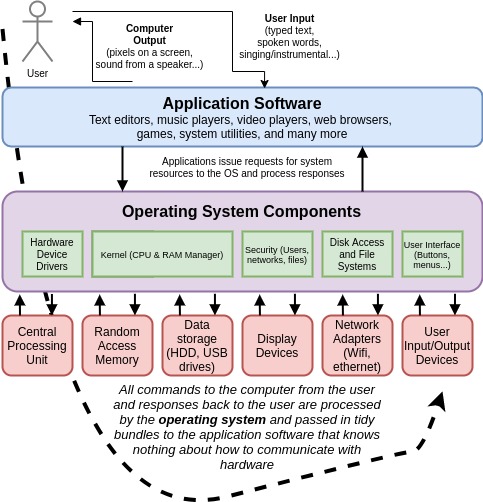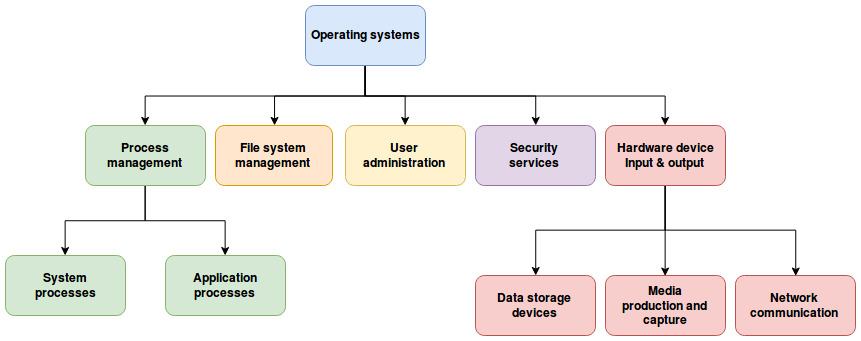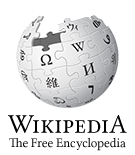
Objective category: Operating systems
Computers.OS (C.OS.*)
Contents
iEssential functions of operating systems
Related course materials
Objective group FUNC: Essential functions of operating systems
| Objective group | Objective ID | Objective text |
|---|---|---|
| FUNC: Essential functions of operating systems | C.OS.FUNC.1: System utilities | Researching tools as needed, classify nearly every system utility program included in both a MS Windows or Linux under one or more of the core group of OS functions and justify your placements by explaining a use case for each. |
| C.OS.FUNC.2: System status assessment | Interpret data from an operating system resource monitor utility to declare a system's resource use status and potential in terms of memory, CPU horsepower, disk I/O, and network bandwidth. | |
| C.OS.FUNC.3: File essentials | Access information about a given file's type, size, owner/permissions, associated programs, and compression status. Interpret that file's metadata to correctly and safely carry out routine file-related tasks (e.g. open/execute, move, rename, compress, etc.) |
resources |
Video overviewPart of the Crash Course video course set, this series is hosted by Carrie Anne Philbin (Cambridge) Diagram-rich slide deckCreated by Prof Jonathan Walpole at Portland State University, this Class 2 slide deck Complete OS Course lecture notes!Complete 300-level operating systems course lecture notes from Jinzhong Niu CCNY-CUNY Wikipedia: The Source of SourcesOperating systems on The Wikipedia |
extension Locating the OS among other computer components
The operating system (OS) is often called the "platform" of a computer because it provides the resources that all software applications require to do their particular jobs. For example, a media player like VLC Player requires an operating system to retrieve sound files from the hard drive, send sound signals to the speakers, and receive instructions from the user.
The following diagram shows the relationship between a computer's hardware components, its operating system, and the application packages that run "on top of" that operating system.

How are programs and operating systems connected?
Every operation we perform on a computer interacts with the computer's operating system because the programs we use rely on the OS to interface with the hardware components. This feature of computer architecture is critically important because it allows application programmers (folks who write software, such as an Internet browser) to "not worry" about how the computer carries out very basic tasks, like retrieving a file from the hard drive, and instead focus on making the program's core functions work correctly.
Why would I need to know about the operating system?
The operating system manages many computer resources and settings that matter to every computer user ranging from controlling who can access the computer's resources and files, starting and shutting down the system, configuring "look-and-feel" settings such as the desktop background, the color of the icons, and more.
The OS of a computer also manages which software is installed, where its files are located, and coordinates how the various programs which run on a computer can share resources such as the processor, the RAM, disk drives, and more.
Core functions of operating systems
Breakdown of operating system core functions

Page created in 2019 by Eric Xander Darsow. Original content can be freely reproduced without any permission or attribution according to the site's content use agreement. Any content accessed by links to external sites or content with specific rights notices is governed by its respective use agreements.

